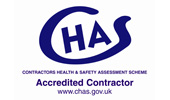Why Do I Need A Slip Membrane?
Why Do I Need A Slip Membrane?
I’m Andy Parkin, Managing Director of the Multi-Award Winning Speed Screed, and want to answer the question “Why do I need a slip membrane”
Not the damp-proof membranes, but the slip membranes, the vapour membranes, as you might know them.
Why do you actually need one? When you’re got your insulation, the screed is going to be laid on top. Why do you actually need to put a slip membrane? I think a lot of people think of floating screeds and think, “Yes, because of containment and because it’s quite a liquid product, I can see why I need a membrane there,” and so that is not a difficult thing to understand why a membrane’s required in that instant.
However when it comes down to semi-dry screeds, traditional screeds, fast-drying screeds, then the lines are blurred a little bit, and you will see probably 50-60 percent of all projects without a slip membrane and the screed going directly onto the surface.
I would really just like to cover the reasons why it is best practise and it is recommended, recommended by the insulation manufacturers, as well, so it is something that they’re acutely aware of.
Vapour Control
Why do you need it? First of all, you need it for vapour control. It needs to be a barrier because you have warm air cooling down, and you have got the vapour, as soon as it hits onto the cool area, it cools. The warm air then turns back into moisture, and you can have damp.
You are placing it on top of the insulation, and so when the warm air comes through, when the vapour comes through, when it cools down, turns back into moisture, turns back into water, it is not going to affect your screed, your other floor coverings, and so it is very important to have vapour control.
Screed Migration
The second reason is to prevent migration of the screed. You are preparing the insulation boards, so in theory, they should be as tightly butted as possible, but when you are hand compacting sand and cement, you are having to force the screed to get good compaction, so you are forcing the screed down.
When you get that compaction, you can get migration of the boards, so the screed can push into any gaps available, and with the best will in the world to really tightly butt joint the insulation, it is easy to get the screed in there as you’re compacting.
I’ve just drawn a little bit of a diagram (see video). The insulation in green. You are butting it together so it is joining up, and that’s assuming that it has been cut perfectly so it’s going to butt up exactly. The screed goes on top, and as the compaction is made on the surface, it can push into the joints. As it pushes into the joints, you get a migration of the screed into those joints. The insulation allows the screed in there.
You will also get a pathway for heat loss, and you are not going to benefit from the heat loss resistance.
One other thing to consider is that you will not have a solid base got a potentially solid base, and you get some mirror cracking there. If there is a joint there and if insulation is not tightly butted due to separation, you may over time with movement see cracking in the screed.
Heat loss and the possibility of cracking due to the fact that you have got the boards starting to separate, and then the base movement. The screed is only gonna be as good as the base that it is actually on.
Foil Facer
The other reason, and this is one of the reasons that the manufacturers really go overboard with it, is that it does prevent the reaction of the wet screed and the foil facer. The foil facer is an aluminium product, and when a cementitious or a calcium sulphate product comes into contact with it, if the board hasn’t oxidised (if it hasn’t oxidised, and visually there’s no way of telling, so you’re getting it straight out of the wrappers you wouldn’t expect it have oxidised anyway). Perhaps if it is been left exposed on a site, it may have oxidised, but if it hasn’t oxidised, there will be a reaction.
In a wet screed, a flowing screed, when it reacts you will actually see the bubbles. Hydrogen bubbles, coming through the screed and breaching the surface, and that is why you definitely need one with flowing screeds. If you get that reaction, the bubbles come through to the surface.
In a traditional screed, you don’t actually see that happening, but it is happening. The reaction is taking place, but because it is a semi-dry product, you don’t actually see it. It is producing those gases, and those gases can weaken the screed. It is something that is scientific and proven. Something that the board manufacturers have in their product literature, and I would be happy to send that data over to anybody that would like to see it.
Those three reasons make it best practise and make it essential.
With at least 50 percent of projects that don’t use it, and initially you’re not seeing anything adverse happening, but it is best practise, and we would like you to enjoy your screed for it’s design life be it 50 or 100 years, rather than experiencing issues further down the line.
Please contact us for more information. We love to help!
Our Accreditations
About Speed Screed
Speed Screed Limited was founded on the key principle of providing first-class customer service. It has since built itself an impressive reputation for delivering high-quality projects across the United Kingdom.
The company’s success is built on its belief in quality work, attention to detail, on-time completion, strong working partnerships and the recruitment of top-level staff. about us >








